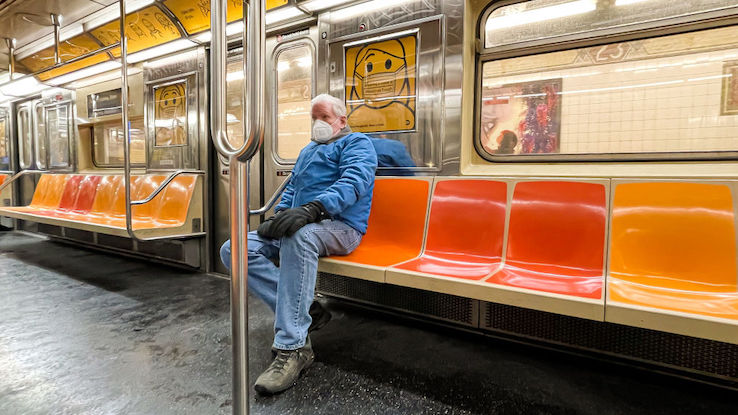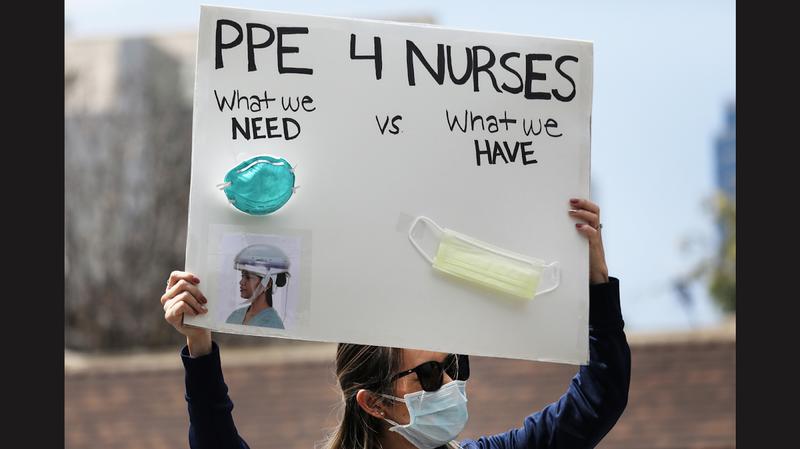Any Reviews on the New Face Masks at Bath and Body Works

In the early days of the coronavirus pandemic, state and federal government officials made some confusing and consummate U-turns in their recommendations nigh the potential benefits of wearing protective face coverings to dull the spread of COVID-19. U.Southward. government leaders initially advised people to avoid wearing confront masks. Just, it was later revealed that this decision was an effort to prevent nationwide mask shortages that would touch on the availability of medical-grade face coverings for healthcare workers. As shortages in personal protective equipment (PPE) somewhen declined, organizations like the Centers for Disease Control and Prevention (CDC) and prominent healthcare leaders like Dr. Anthony Fauci, managing director of the National Institute of Allergy and Infectious Diseases, changed their tunes. Face coverings were deemed essential for preventing the spread of the virus.
These shifts from earlier advice were initially confusing to many Americans, particularly those who believed they were doing the smart — and right — affair by foregoing masks. Just since early April of 2020, the CDC's updated recommendation has become a common refrain: Masks tedious the spread of COVID-19 and protect united states and the people around u.s.a.. Despite previous doubt, it's clear now that wearing masks is an essential element of safeguarding our wellness. But not all face up coverings are equally constructive at stopping the spread of infectious respiratory droplets. Hither's what you need to know about choosing the correct — and well-nigh protective — mask.
The Differences Between N95 Masks & Surgical Masks
The first step in helping out is to stay informed. If you panic-bought surgical masks or N95 masks months ago, now would exist the perfect fourth dimension to donate unopened products to your local infirmary. And, if you're even so confused well-nigh the types of masks on offer, we'll intermission it down for you existent quick.

N95 Masks: These thicker, stiff respiratory masks are equipped with filters that block 95% of particles that measure 0.3 microns in size. Most importantly, these masks are fitted to each individual, ensuring that they create a completely sealed barrier — meaning there's very footling chance of transmission with these high-grade masks.
If you aren't a healthcare professional, don't buy up N95s: They require specialized training to apply properly and, like most personal protective equipment (PPE) issued to healthcare workers, N95 masks are single-use only. This ways the shortages are greater than ever and the CDC has begun recommending some rather risky strategies for working effectually the supply issue.
Surgical Masks: Loose-fitting and fabricated of cook-blown fabric, these aren't as effective as N95 masks. Nonetheless, the fine mesh of synthetic polymer fibers can still shield the wearer from infectious droplets — and stop the wearer's potentially infectious droplets from being transmitted to someone else. Initial CDC guidelines stated that those who thought they'd been exposed to COVID-nineteen — be they symptomatic or not — were to clothing masks or face up coverings in club to protect others, simply now it'due south more of a two-way street.
If you're even so commuting on public transit and picking upwards groceries and prescriptions in person, or if you're a flagman to someone, you'll desire to habiliment a face roofing, regardless of your COVID-19 status. Due to the shortage of N95 masks, healthcare professionals are now resorting to these cloth shields in social club to mitigate potential COVID-19 transmission. This means the rest of u.s. should probably call up up some crafty, DIY face up coverings.
DIY Face Coverings: Tips & Tricks
According to Popular Science, researchers at the University of New South Wales who studied the use of reusable cloth masks discovered that "almost 97% of particles got through the fabric masks…compared with the 44% that penetrated synthetic medical masks." These moisture-retaining cloth masks are certainly far from perfect, which is why the World Wellness Organization (WHO) took such a potent stance against their use in January of 2020. Notwithstanding, as the COVID-19 pandemic continues, many experts, including those at the CDC, have concluded that for the general public some sort of face roofing is better than no mask at all.

Across the country, grassroots efforts take sprung upwards, wherein clothiers looking to stay afloat and crafters wanting to do their part to assist those on the front lines have created abode-sewn medical-course masks for health workers who have been unable to get proper PPE. "No one before would have thought of fashion designers or anybody helping with DIY masks," says Katie Kozel, a medical supply concatenation consultant in Colorado who spoke with Pop Scientific discipline. "But no one before would have thought of trying to utilise rain ponchos as isolation gowns either, which we're seeing happen now."
In many instances, those same designers are selling handcrafted masks to the general public. But, given the still-express supply of surgical and medical-grade masks, it may exist best to get crafty with a DIY face covering instead. While some folks may experience confident enough to sew their own mask, those among us who are less deft with a needle and thread tin rest assured that there are some great no-stitch methods out there as well. The CDC has several DIY face up covering options on offer: a sewing design; a no-stitch method that involves cutting upwards an old T-shirt; and, perhaps the most popular i, a no-sew blueprint that requires a bandana, some rubber bands and a coffee filter.
Regardless of which design you choose, a DIY face up covering should fit every bit snugly as possible; include multiple layers of fabric; and, of form, not restrict your breathing. When you return home from running essential errands, remove your face roofing immediately and avoid touching your oral cavity, nose and eyes. As always, wash your easily — and, after every utilise, toss your DIY mask into the washing machine to rinse away any potentially hazardous droplets that may be on the fabric.
Although non a replacement for social distancing and skilful hygiene habits, wearing face coverings in public tin can certainly help mitigate the transmission of COVID-xix. Afterwards all, the CDC's goal in announcing this new directive is to "slow the spread," not to stop it. For those who might dismiss this less-than-perfect practice, we propose thinking of information technology this way: When you ride your bicycle, you wear a helmet. Although the helmet isn't guaranteed to protect y'all from any potential injuries, it can surely assistance, then why wouldn't you article of clothing one? Similarly, face coverings won't cease you from getting or spreading COVID-19 altogether, but they tin surely help, so why wouldn't you vesture one?
meisnerbobbled1985.blogspot.com
Source: https://www.reference.com/science/face-masks-coronavirus-pandemic?utm_content=params%3Ao%3D740005%26ad%3DdirN%26qo%3DserpIndex
Belum ada Komentar untuk "Any Reviews on the New Face Masks at Bath and Body Works"
Posting Komentar